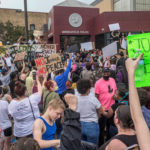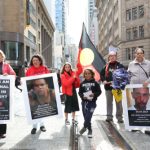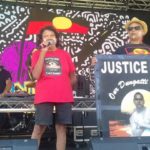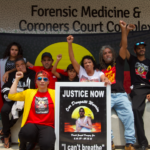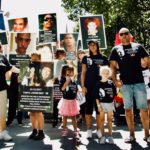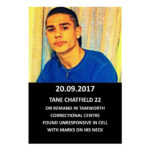“I Can’t Breathe”: ISJA’s Raul Bassi on the George Floyd-David Dungay Rally
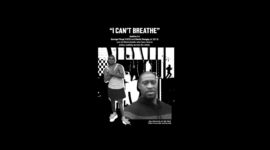
The protests over the police killing of an African American man on the side of the road in the US state of Minneapolis continue on a week after the incident, and they’re only growing. What began as local demonstrations in vicinity of 25 May murder, have now spread to at least 30 other cities.
In support of the late George Floyd, and against the systemic racism embodied by US police forces, this uprising has even made it to the White House, where protesters have been mobilising for several consecutive nights.
As Floyd lay handcuffed face down on a roadside, officer Derek Chauvin knelt upon his neck for over eight minutes. The 46-year-old victim repeatedly cried out, “I can’t breathe”. And after the black civilian lost consciousness four minutes in, the white cop continued to press down with his knee.
https://www.youtube.com/watch?v=3WDw5BkP02M
It happens over here
But, as many Australians watched the footage of Floyd’s death in horror, others have been pointing to a very similar incident that took place over here, involving the life of a young Aboriginal man taken in the hospital wing of Long Bay gaol.
On 29 December 2015, six prison guards stormed a cell and dragged out diabetic inmate David Dungay Junior, as he refused to stop eating a packet of biscuits. The 26-year-old Dunghutti man was then dragged into another cell and wrestled onto a bed.
The CCTV footage capturing this incident reveals multiple guards kneeling upon Dungay’s back, as he lay face down in the prone position, calling out, “I can’t breathe”. A nurse then injected the First Nations man with a powerful sedative and moments later he stopped breathing.
Not a single conviction
At 3 pm Saturday 6 June, the “I Can’t Breathe”: Justice for George Floyd and David Dungay rally is meeting a Sydney’s Town Hall and will the march down to Belmore Park.
In showing solidarity with protesters in the US, it will also shine a light on the often-overlooked racial prejudice in our local system.
The Indigenous Social Justice Association (ISJA) is one of the groups organising the event. ISJA has long been drawing attention to the issue of Aboriginal deaths in custody in this country.
There have now been 432 such deaths since 1991, according to the Guardian, without a single criminal conviction.
Sydney Criminal Lawyers spoke to ISJA secretary Raul Bassi about the similarities between the two black deaths in custody, the difference in the reaction over here compared to that of the US, and why it’s time wider Australia demands a change in response to First Nations custody deaths.
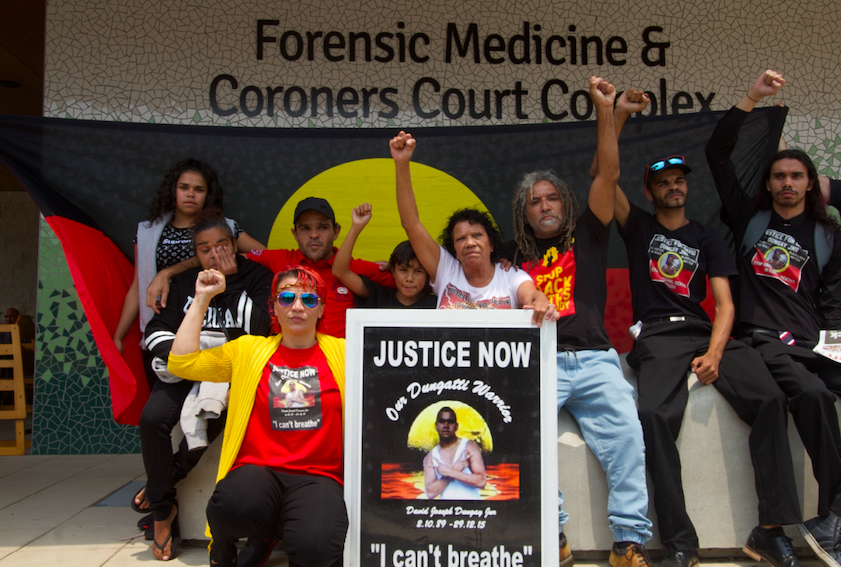
Firstly, George Floyd was brutally murdered last Monday by police on the side of the road in Minneapolis. Since then, there have been ongoing protests in that city, which have spread to at least 30 others across the US.
What do you think about the uprising that’s currently taking place in the States?
At least 50 percent of those who have recently lost their jobs are from the lower socioeconomic side. And one calculation puts it at 45 percent of the unemployed being African Americans.
Besides that, there is always something between the police and the African Americans. This time the incident is so brutal, it was bound to get a reaction.
Now, there are protests at the White House. If you see the footage in Washington, the demonstrators are throwing whatever they can.
The National Guard and the secret service are very concerned because the people gathered don’t want to move.
A similar case happened there before in 2014 with Eric Garner. He said, “I can’t breathe”.
As you’ve just alluded to, Floyd called out “I can’t breathe” repeatedly as a police officer knelt down on his neck.
This is the same thing David Dungay Junior called out as he was forcibly restrained by prison guards until he died in Sydney’s Long Bay Prison in December 2015.
Raul, how do you describe what happened to David Dungay?
David’s case is absolutely a lack of duty of care. There was no reason for it. As soon as they held him down, they started to kill him.
Don’t forget that David Dungay said, “I can’t breathe,” at least twelve times. It was just like Floyd, who said it a total of eleven times.
When you see the tape of what happened to David you notice six people on top of him. They were big, burly people stopping his legs and arms moving.
How can you breathe when you can’t extend your body? You have to move your body to breathe.
They placed David in the prone position. And he was saying he couldn’t breathe. There were two people pushing down on his back. This is absolutely a lack of care.
The third thing about that is the guards called the nurse to give him the injection, and as soon as they did, he was calm – so calm that he was already dead. There was no movement from him.
Then when they tried to resuscitate him, the guards did what they could, but the nurses took up to eight minutes before doing anything.
You have to do resuscitation continuously. Again, this is a lack of care. They just thought, no worries, he’s Aboriginal.
But, the coroner went on to say it was an accident.
Following the death of George Floyd, a lot of people in Australia have decried the racist system that operates in the US, without mentioning our own system.
What would you say to these people in relation to the criminal justice system in Australia?
The criminal justice system that we have in this country is biased against Aboriginal people.
You only have to look at the number of Aboriginal people who have been locked up in prisons, when they are only 2 to 3 percent of the whole population of this country.
This shows that the system is completely biased against Aboriginal people.
Another point is, when you see rallies for Black Lives Matter, you see many people going. A few years ago, when they had a rally like that here, there were about 1,500 people who went.
But, two weeks later, when we had a rally for Rebecca Maher – an Aboriginal woman who died in custody – we had only 12 people attend. That’s even when we’d advertised the rally.
The way that people support rallies about the same issue in the US, is not the same way people react over here. What is the reason? It is the racism in this country.
As you said earlier, the coroner declared that David Dungay’s death was an accident in November last year. And following from that, he failed to recommend any consideration of criminal charges.
But, his family is continuing their push for justice. What is happening there?
There are a few areas that they can proceed in. They can’t demand a new inquest, but one avenue is safety in the workplace. In any workplace where there is a death, there is an investigation.
I spoke to the department that deals with this, and they said that there is a case to be made, because there was a person who died in a workplace.
They said that if the guards used the excuse of no proper training over the incident, then under the safety code, it’s possible to escalate the responsibility.
If the guards say they weren’t aware, and their managers say they weren’t either, then we can reach up all the way to the Corrective Services commissioner, because in safety situations, he’s responsible in the end.
The other possibility is a civil case. But, the question about whether this can go ahead is the money, because these cases are very expensive.
The idea for that civil case is that we will put four deaths in custody together: Rebecca Maher, David Dungay, Patrick Fisher and Eric Whittaker.
These four cases all involve a lack of duty of care.
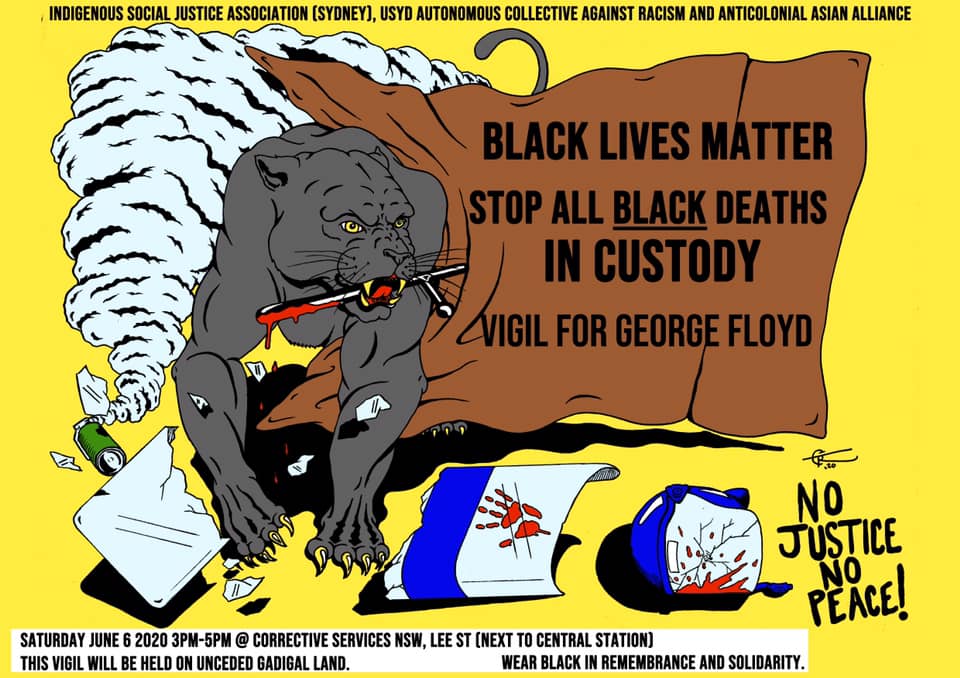
And lastly, Raul, the I Can’t Breathe Rally is going to be held on Saturday at 3 pm. Everyone is saying it’s going to be a large turnout.
What should people expect on the day? And what’s the message it’s conveying?
The first thing is the COVID-19 restrictions are still happening. So, we will be holding the rally in line with the restrictions.
We will have marshals to make sure the rules are followed. And we will also be offering all the protesters masks.
We want to build solidarity not only with what is happening in the US, but also here. Many people do not know what happened to David Dungay.
The common point is racism. But, we have not had the same support here in the past, as they have in the US.
The rallies where we have seen good participation over the last three years are the rallies for Invasion Day.
At those rallies, there was a large participation from non-Aboriginal people. And more than that, there were a lot of young people.
The main lesson to learn from this is we have to be in solidarity every time. Both people are exactly the same. No person is more important.
If you feel for one person, how can you not feel for the other?


